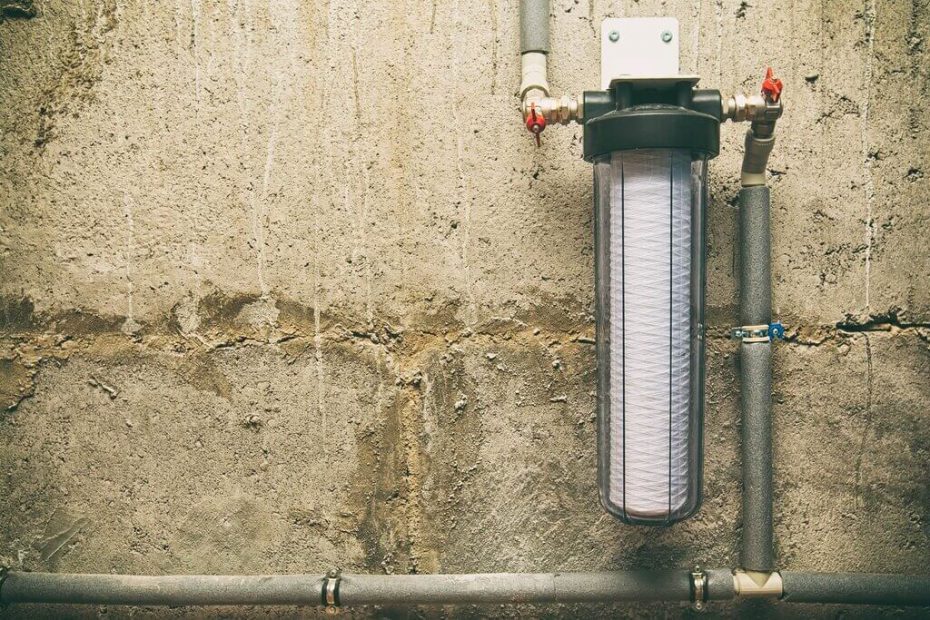Domestic wells aren’t covered by public water treatment services, so if you have one on your property, it’s important to know how to filter your well water.
Filtering well water is easy, but the best well water filtration systems have many different features, making it a confusing task to work out what kind of treatment device you need in the first place.
Here’s an easy guide to well water filtering, from understanding your private well, all the way to maintaining your filter system after years of use.
What to Know Before Buying a Well Water Filter

Source: architectureartdesigns.com
1. Know Your Well
Domestic wells are drilled at different depths into different types of bedrock, in different kinds of environments. This makes the quality of well water highly variable, and even wells in close proximity may produce water that’s contaminated with different substances. Read the well water testing guide from the CDC for more info.
As a result, it’s important to get an accurate idea of what types of contamination you face, before taking any steps to filter your well water. Here are some ways to do this:
- Water testing kits are available at most hardware stores, which check your water supply for the most common contaminants. Many filtration brands and local organizations also offer water testing services.
- While not foolproof, surveying wells on neighboring properties is likely to give you a good idea of the major threats to water quality in your area.
- Making a list of local environmental features that could contribute to well pollution is another useful method of judging well water quality. Nearby farms, factories, major roads, and other industrial areas where chemicals are used can all create contaminants that seep into groundwater.
2. Check Your Well Pump Is Not Positioned Too Low
When well pumps are positioned too low in the well shaft, they can begin to bring up large amounts of sand, silt, and other types of sediment.
While many filter systems contain sediment filters, they often struggle to deal with large amounts of particulate matter, so it’s a good idea to remove needless sediment from your well water before installing your filter.
Because many filter systems contain fine mesh media, leaving lots of sediment in your well can put excess stress on the filters, risking clogging and reducing their lifespan.
3. Choosing the Right Well Water Filtration System

Source: rd.com
Once you know the makeup of contaminants in your well water, it’s time to choose a filtration system. Filter systems are made up of multiple stages, each designed to tackle a specific contaminant. No single filter stage is able to handle all common well pollutants, so it’s important to use a variety of stages to fully protect your water.
4. Get the Right Filter for Your Well Water’s Contaminants
Sediment Filter
Also called pre-filters, these devices use replaceable or cleanable filter screens to remove sand, silt, rust, dirt, and other fine particles. Sediment filters are usually the cheapest type of well water treatment device, but they’re also among the most effective. Sediment filters improve water appearance and protect pipes and appliances.
Carbon Filter
Activated carbon filters are the most popular of all water filter stages. Because most common water contaminants are carbon-based, these devices are able to capture a wide variety of different substances—including pesticides, urban chemicals, and byproducts from decaying plant and animal matter.
KDF/Air Injection Filter
Not every well water system contains a KDF or air injection filter, but their ability to remove large amounts of iron from the water makes them a very useful filter stage for many properties. Iron is one of the most common well water contaminants, turning the water off-putting brown color and causing staining.
UV Purifier
UV purifiers are a modern alternative to disinfectant chemicals like chlorine. This makes them a relevant filtration stage for wells with a risk of bacterial or viral contamination. In shallow wells, of those in flood-prone areas, microorganisms can wash into the groundwater supply from nearby sewage or urban pollution. UV rays in these devices disrupt pathogen DNA, rendering them safe to drink.
Water Softener
Groundwater spends long periods under the ground, and depending upon the surrounding bedrock, can accumulate high amounts of dissolved minerals. Rocks like calcium and magnesium give water a “hard” feel and deposit scale inside hot water appliances. As a result, many well owners choose to soften their well water by adding a softener to their filtration system.
Also Read: 5 Best Whole House Water Filters For 2022
5. Maintaining Your Well Water System

Source: bobvila.com
Clean and Replace Cartridges Regularly
Many filter stages can only operate effectively if their cartridges are regularly replaced or cleaned. Leaving filter cartridges to clog up and become ineffective can have a knock-on effect on subsequent stages, making them more vulnerable to damage.
Refill Brine Tanks and Break Up Salt
To prevent clogging and keep water soft, check the brine tank of your softener around once per month. Sometimes, salt can bind together into “salt bridges” that make it difficult for the softener to operate. Use warm water and a clean stick to break them up.
Change Large Tanks Every 5 or 10 Years
Depending upon the capacity of your water filter and the overall level of contaminants in your well, you’ll need to change the entire filtration tank every few years. Contaminants bind to the surface of carbon filter media, so once the filter cartridge becomes saturated, it needs to be replaced to remain functional.
